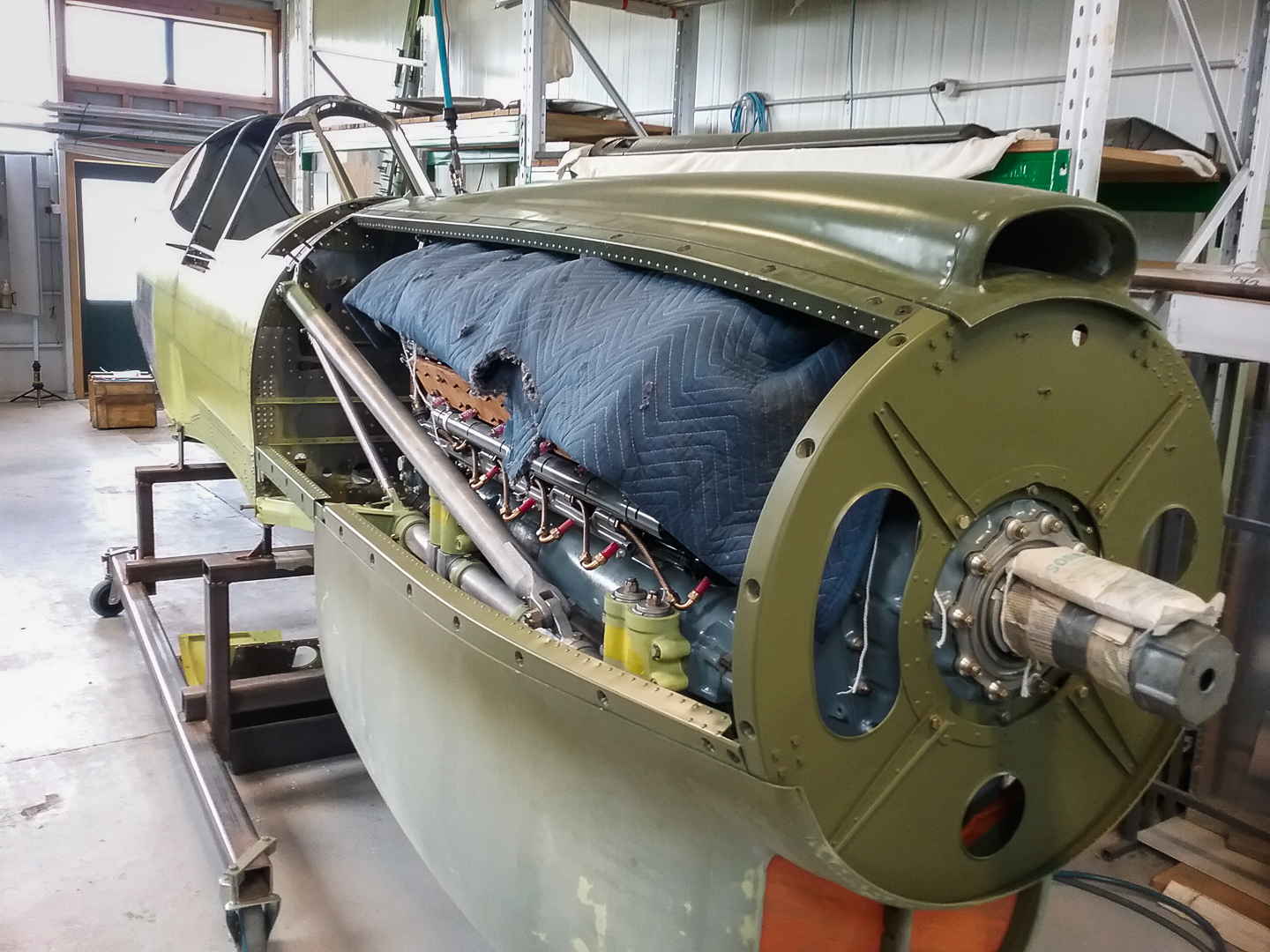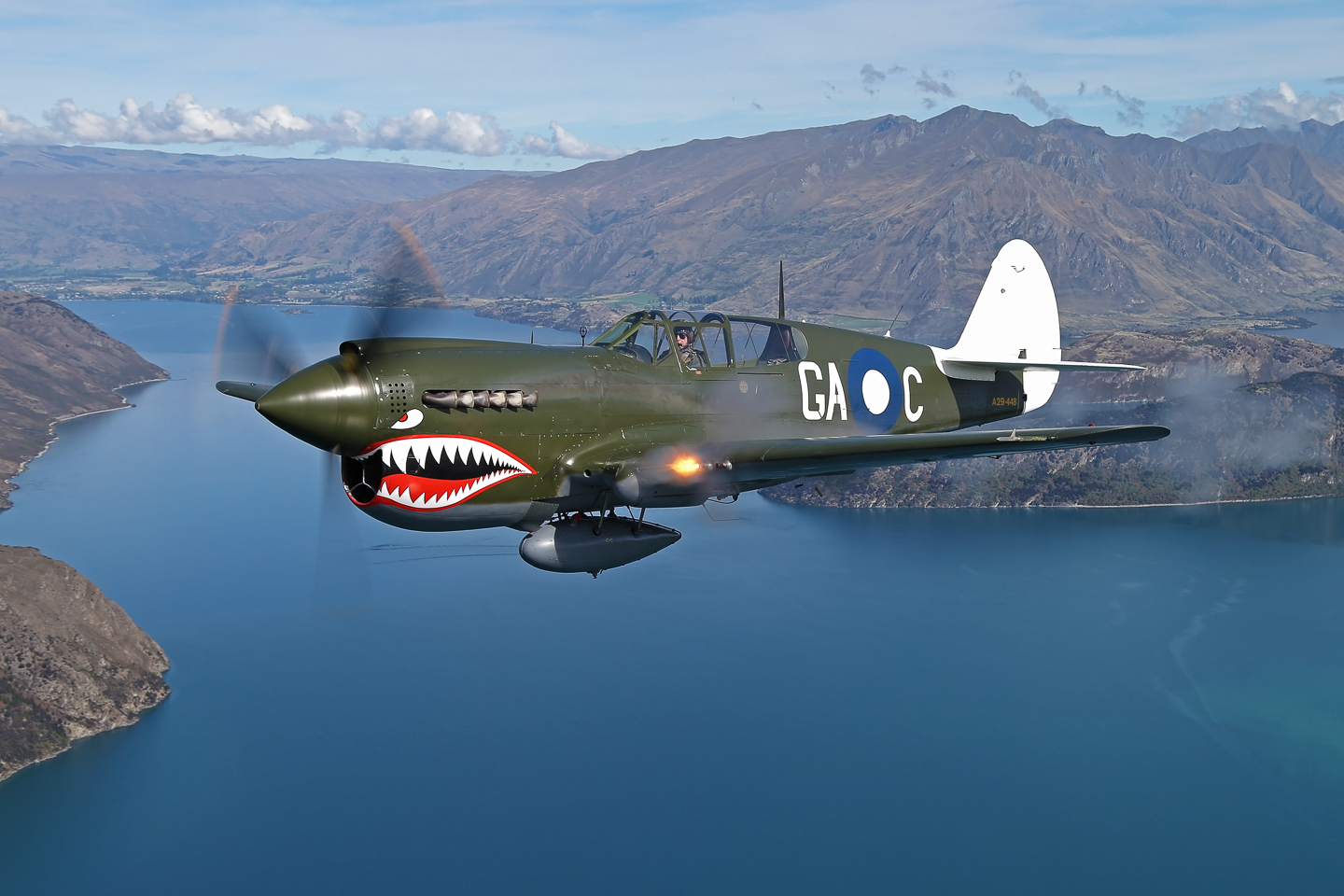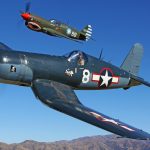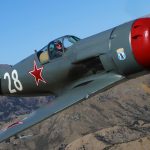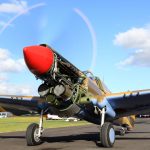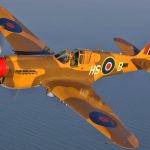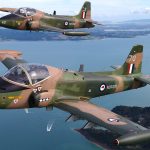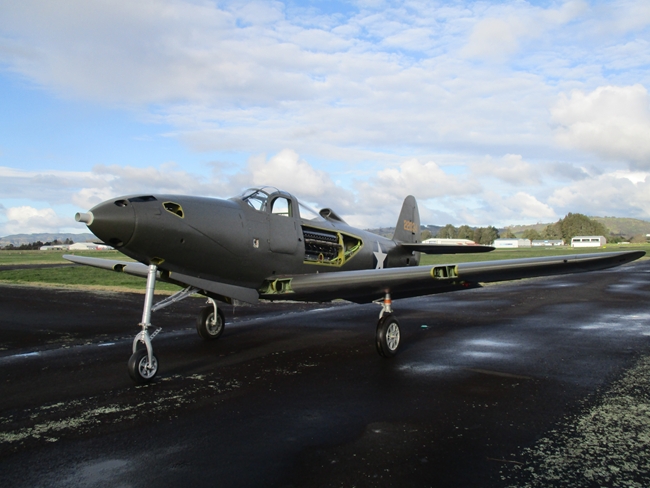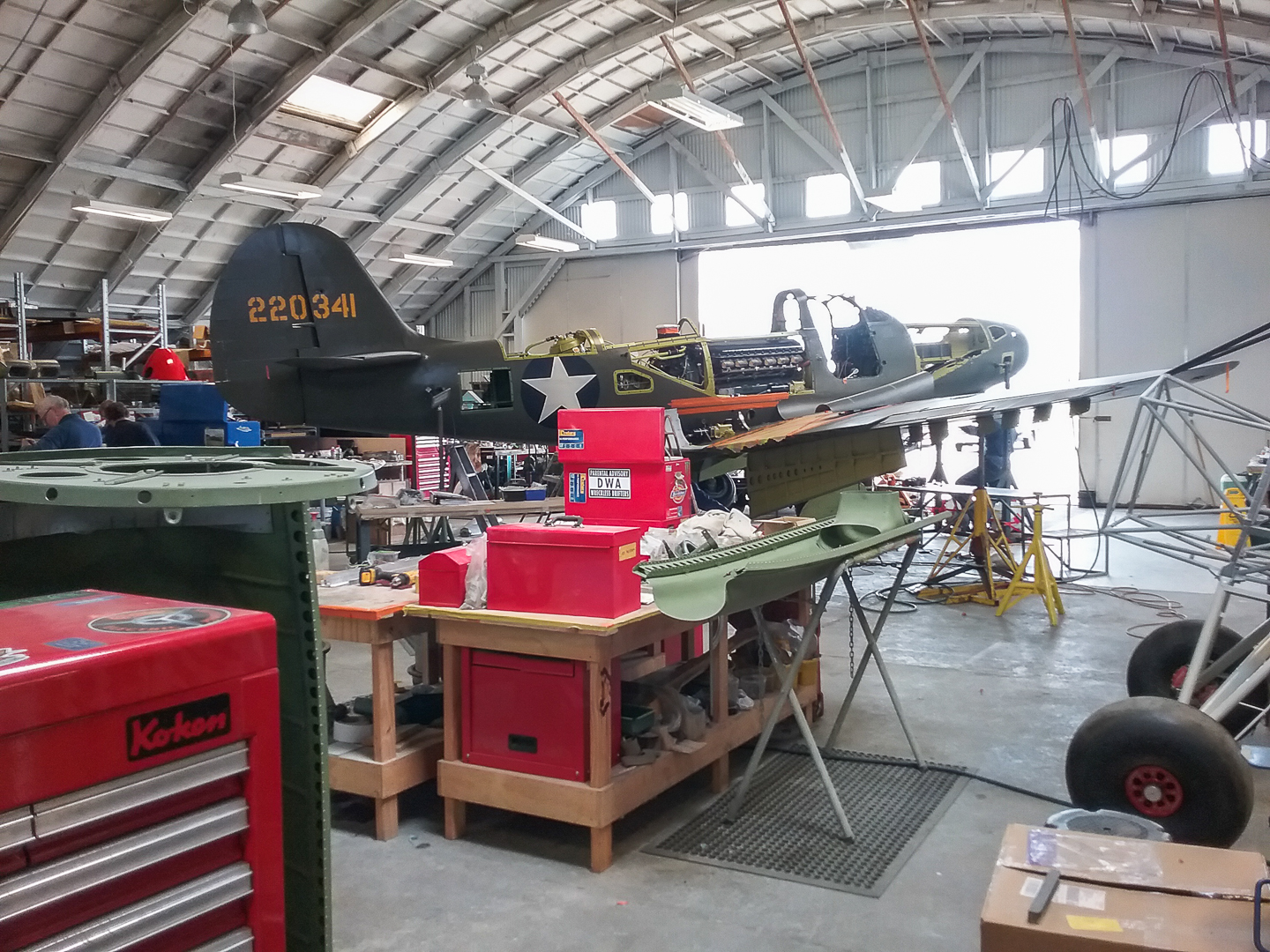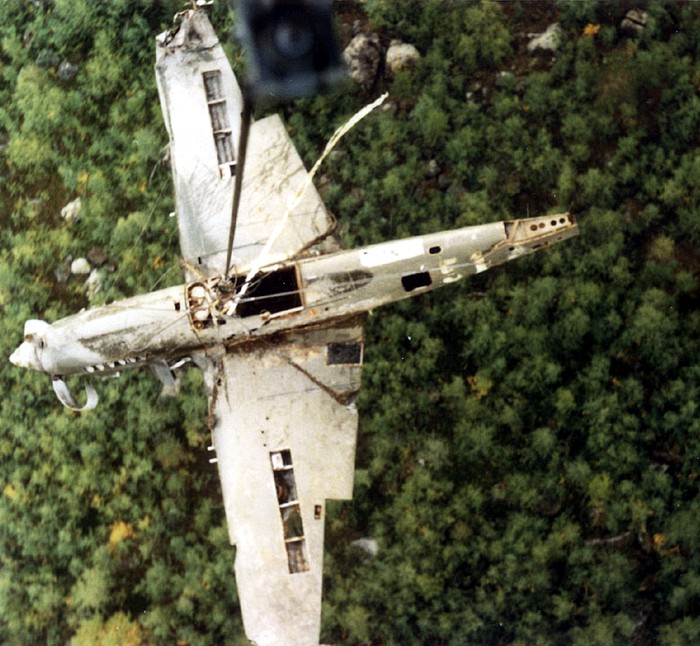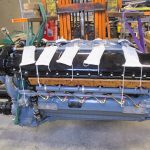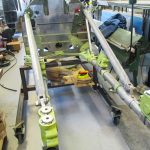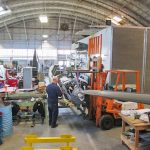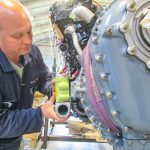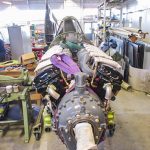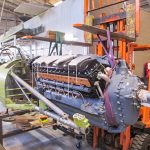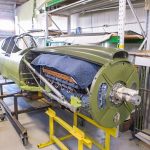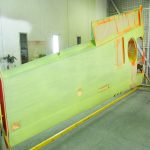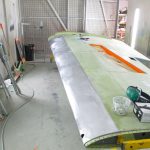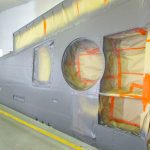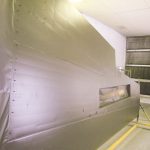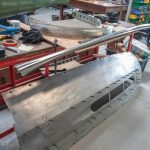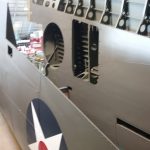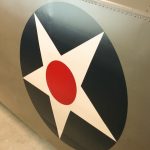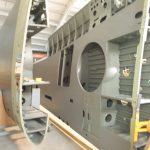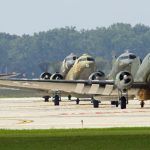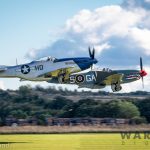Pioneer Aero in Auckland, New Zealand has a long-standing reputation for producing world-class warbird restorations. The company’s origins date back to 1992 when, under the name of Pacific Aircraft, they began restoring former Royal Australian Air Force Curtiss P-40 Kittyhawk Mk.IV A29-448 (ex-42-104730). When Pacific Aircraft got into difficulties a few years later Garth Hogan purchased their assets, and re-formed the company with the original staff as the new Pioneer Aero Restorations Ltd.
The company retained its focus on P-40 aircraft, and has produced seven fully-restored Warhawk/Kittyhawks since 1998, as well as an additional pair of complete wing sets for other clients. Other aircraft types have not been forgotten, however, with Pioneer having fully restored a Yakovlev Yak-3 and a unique Lavochkin La-9. Pioneer Aero has also maintained and supported the following aircraft types P-51 Mustang, FG-1D Corsair, T-6 Texan and BAC 167 Strikemaster.
Currently in the hangar, the team is finishing a Bell P-39Q Aeracobra for Jerry Yagen and is well advanced with the restoration of a brace of P-40E’s. Also in storage for future restoration are two Vought OS2U Kingfishers and the only known example of the mighty de Havilland DH.103 Sea Hornet.
As can be seen from the above image, the P-39 is close to being done now. Once she is out the door, there will be room for the P-40’s to spread their wings in the workshop. One of the two is P-40E 41-13570. This aircraft is a former Soviet Air Force Lend-Lease example, recovered in remarkable condition from Lake Kod Ozero in Russia back in 1997. It first flew in late 1941, with the U.S. Army Air Forces formally accepting her January 23rd, 1942. She was soon on her way to the Soviet Union though, arriving in Russia, most likely at the port of Murmansk, during the spring of 1942. From here the P-40 moved to an airfield at Murmashi, just south of Murmansk, where she became a part of the Soviet 14th Army with the locally based 20 GvIAP (20th Guards Fighter Aviation Regiment) whose duties were to cover the Kola Peninsula and Murmansk. In the early hours of June 1st, 1942, Jr. Lt. A. V. Pshenev Kittyhawk was flying this Kittyhawk alongside P-39s and P-40s from the 19 GvIAP to escort Tupolev SB bombers on a mission to attack a German-held airfield at Petsamo. They were met by heavy opposition from the Luftwaffe, tangling with Messerschmitt Bf 109s of II/JG5. During the melee, Pshenev’s P-40 received hits to its engine, which rapidly began to overheat. The pilot decided to put the aircraft down in a lake, rather than risk the uncertainty of putting her down in the obstacle-strewn tundra. Pshenev survived the heavy impact of the landing (still semi-frozen in June!), and made it safely to shore, likely imagining that his P-40, sinking to the lake bed, would never be seen again.
Flash-forward 55 years to August 31, 1997 though, and a recovery team would be raising the Kittyhawk from her watery grave for a British collector. The project has passed between a number of different owners and restoration shops over the intervening decades, but has been with Pioneer Aero since 2015. Her present owner, Claudio Coltri, provided us with a recent restoration report on how the project is progressing, and we thought our readers would be interested to see the details.
- Fuselage and engine.
- Fit engine mount blocks to engine.
- Clean up and fit “slave” mount block to engine bolts (special Allison Bolt)
- Sling engine and prepare to install onto bearers.
- Trial fit engine to fuselage to allow front cowl work to proceed.
- Forward cowl bulkhead fitted to engine.
- Top cowl fitted to ensure correct distance/location between firewall and forward cowl bulkhead.
- Cheek cowl rails inspected and repaired. Inner pressings drilled off to allow rails to be straightened and twist removed. End fittings machined to correct sizes and shape as per drawings. All components prepared and primed then rails clamped to straight edge and re-riveted.
- Firewall attach brackets fabricated and drilled to fit.
- Check cowl rails fitted to fuse and engine mount brackets.
- Chin cowl trial fitted to allow cowl gill frame to be installed and checked for fit.
- Original side cowls fitted and repairs and replacement items noted.
-
- Wings.
- L.H wing prepped for paint.
- Wing mounted into rotisserie frame.
- Entire outside surfaces Strontium primed.
- Topside painted in Dark Olive Drab and lower in Neutral gray.
- Wheel bay, fuel bay and ammo bays prepped and primed.
Since this report was completed, the wings are now fully painted, including national insignia, although the detailed decals have yet to be applied. The images below show the progress as it stands from the end of September.







